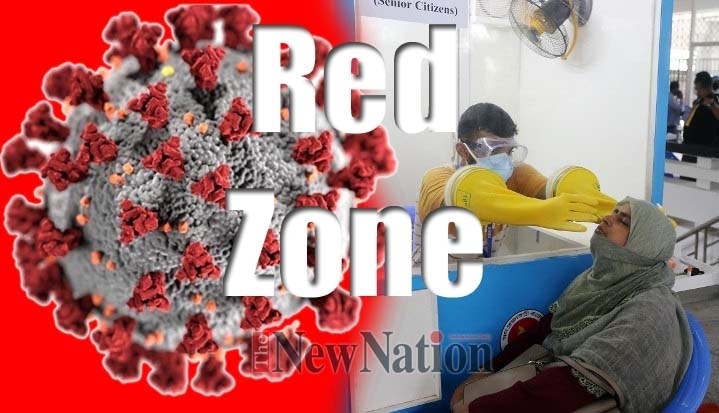
UNB, Dhaka :
After designating Dhaka and Rangamati as ‘red-zones’, health authorities on Wednesday marked 10 more districts in the ‘high-level risk’ category in the wake of a rise in Covid infections there.
Besides, 32 districts have been designated as ‘yellow zones’ (at mid-level risk) and 16 as ‘green zones’, officials said. The decision was taken following a week-long survey of the Covid situation in Bangladesh.
The 10 new districts in ‘red zones’ are Gazipur, Rajshahi, Jashore, Kushtia, Bogura, Dinajpur, Chattogram, Lalmonirhat, Khagrachhari and Panchagarh. The average infection rate in these districts is 10%.
Besides, the infection rate in the capital is 28.11% while that in Rangamati is 10.71%.

The average infection rate in the ‘yellow zones’ is 5%. The 32 districts are Sylhet, Feni, Narayanganj, Noakhali, Cox’s Bazar, Moulvibazar, Faridpur, Munshiganj, Laxmipur, Shariatpur, Mymensingh, Khulna, Barishal, Manikganj, Sirajganj, Gopalganj, Rangpur, Jamalpur, Naogaon, Jhenaidah, Natore, Satkhira, Pirojpur, Bagerhat, Magura, Narail, Patuakhali, Kurigram, Joypurhat, Sherpur, Jhalakathi and Thakurgaon.
Meanwhile, the districts in the ‘green zone’ are Brahmanbaria, Habiganj, Narsingdi, Kishoreganj, Sunamganj, Tangail, Madaripur, Rajbari, Bhola, Netrakona, Gaibandha, Chapainawabganj, Barguna, Chuadanga, Nilphamari and Meherpur districts. The infection rate in these districts is below 5%.
The Directorate General of Health Services (DGHS) has, in fact, divided the districts of the country into red, yellow and green zones, considering the infection rate of Covid.
Last week, the government imposed restrictions on public movement and other activities like operations of public transport vehicles at half their capacities amid the growing concern over the new Omicron variant of the coronavirus.

